Photo
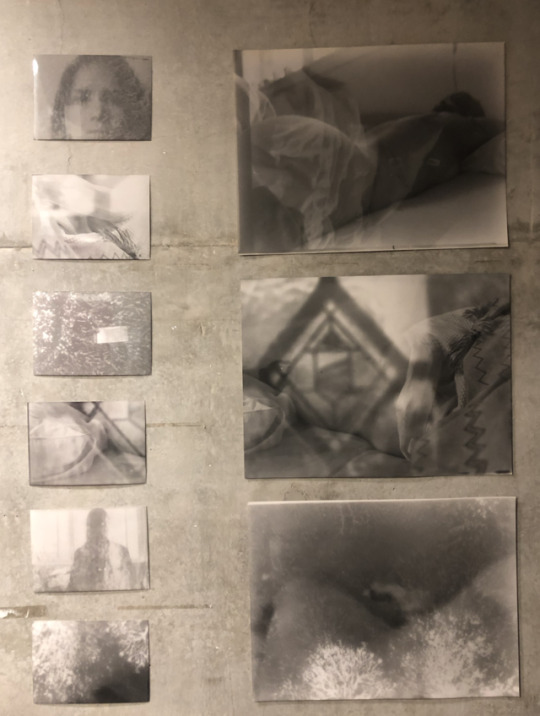
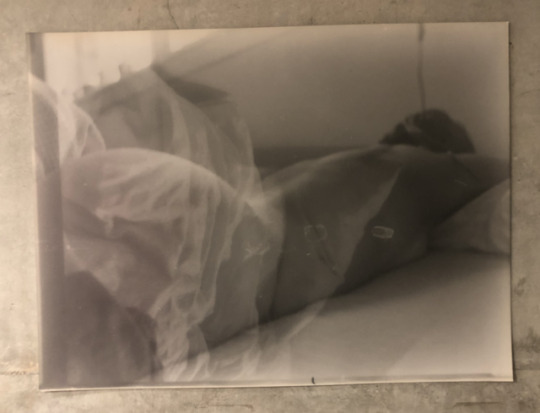
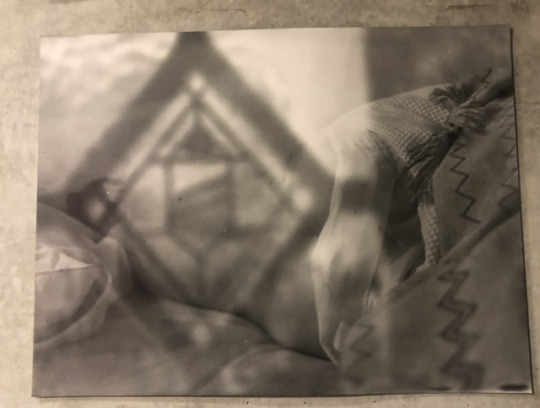

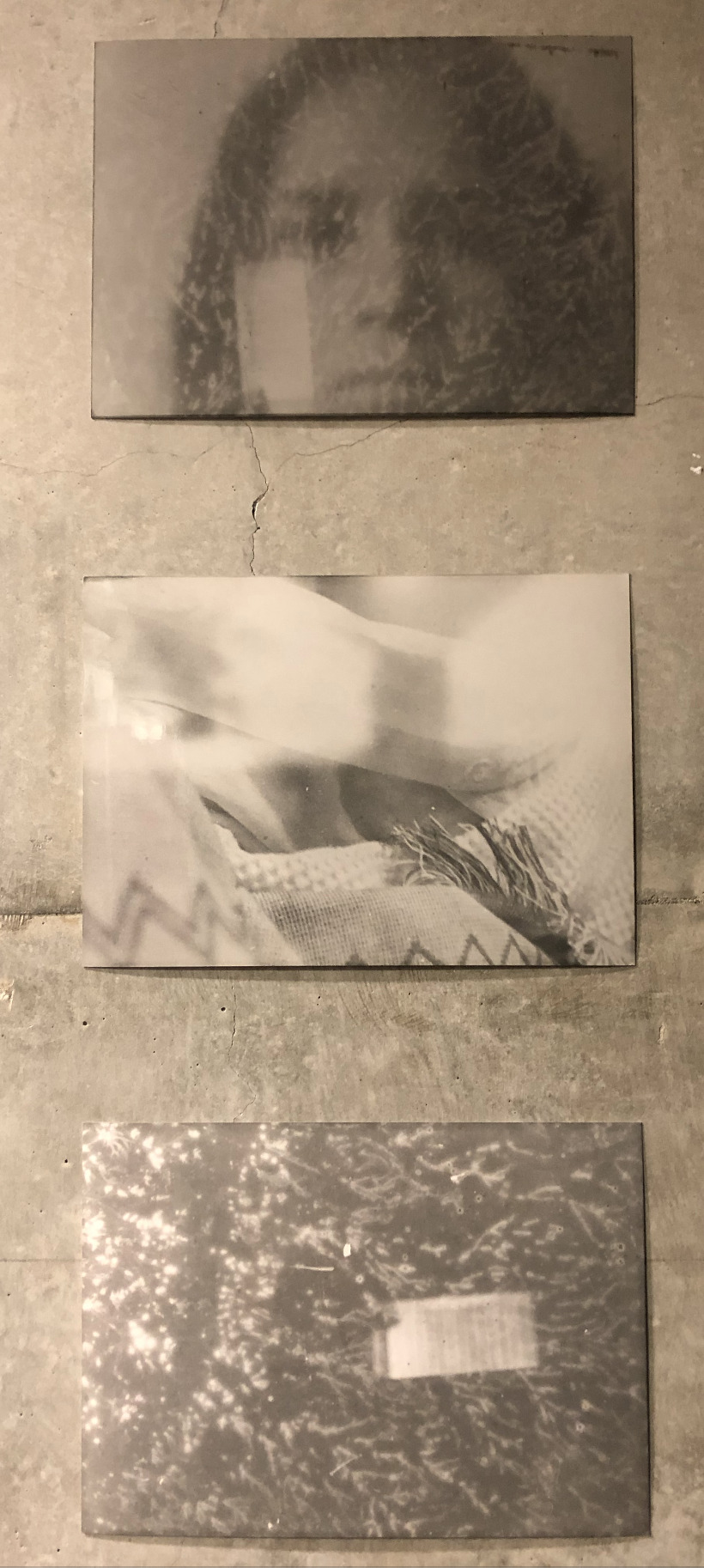
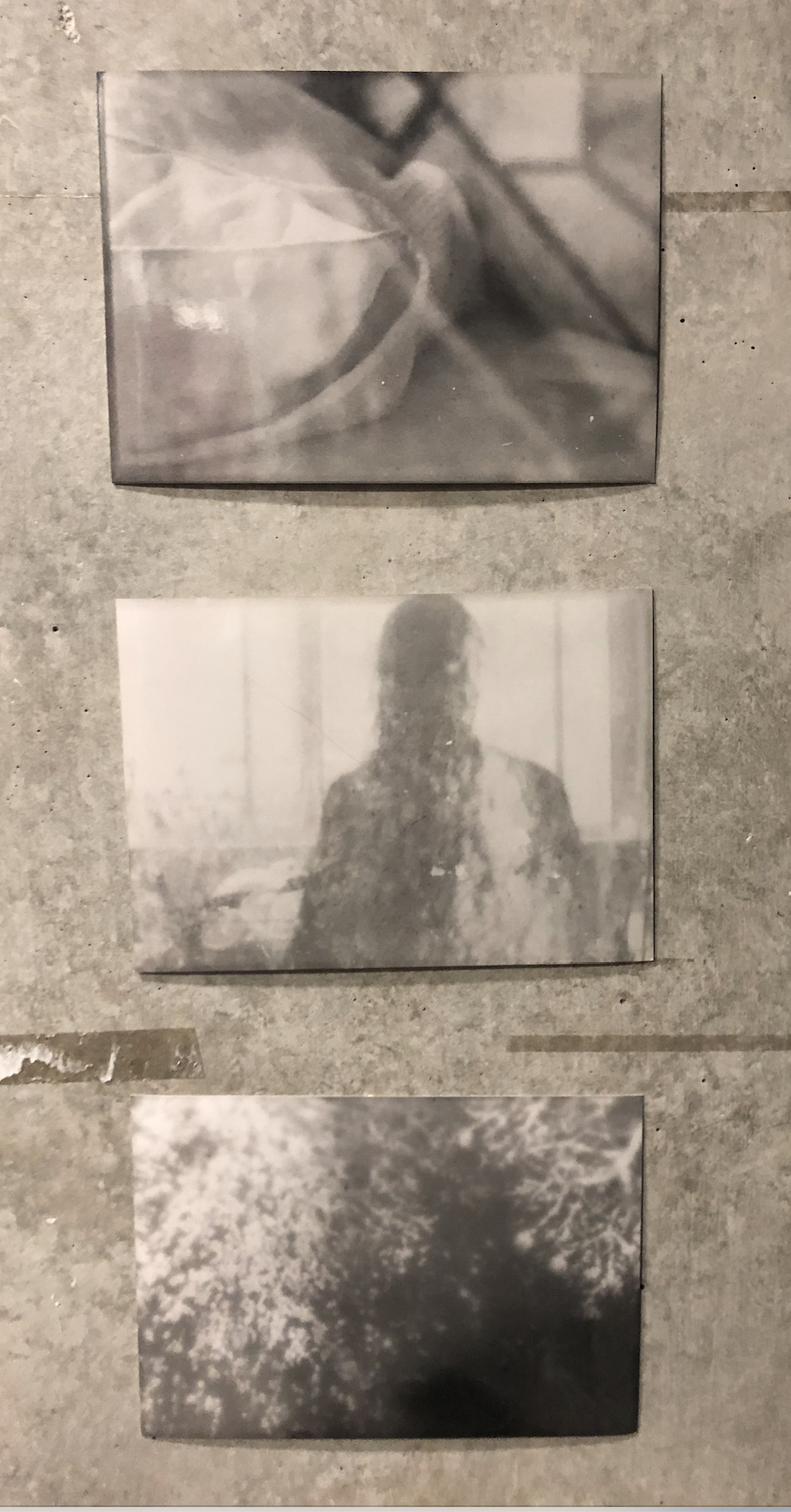
My final work is called “The people I live with”
Overall, I’m pleased with how the images turned out - I would have liked to spend more time on perfecting the mid grey tones however as this was also the nature of working with expired film I’ve accepted that I wasn’t able to control everything.
My process started with getting my hands on expired film which I had bought previously (perhaps a year ago now) and to learn how this particular film behaves under set conditions. In total I shot 2 rolls of 36 frames - however as this film came without preloaded cansiters I had to sacrifice a few frames while I was learning how to load it in the blackout room. I kept a record of each double exposure as I shot it and I came across an interesting pattern: every time I shot through vegetation - ie lots of little detail with my light source coming from either behind me or slightly to the side a ‘mould’ like bacteria effect would appear on the negative. This is easily picked up on some the prints as they have a distinct ‘speckled’ appearance.
Conceptually I was drawn towards the theme of time. The act of recording the mundane with a sense of chronology and the preservation of a memory - and so my choice to focus on my roommates is to freeze a moment of our lives and offer my perspective into our own little ecosystem. It’s also addressing the sense of fleetingness - in the sense that over the timeline of our lives we’ll only be together for a small percentage of it yet it can still hold such significant memories and emotions. It’s nostalgic; we’re young and here and alive, but also time goes by and we’ll get older and move on but will always have the time we spent together in our hearts and memories.
Essentially - my work is about the people I live with but it’s also about where we’ve come from and where we’ll go next.
0 notes
Photo


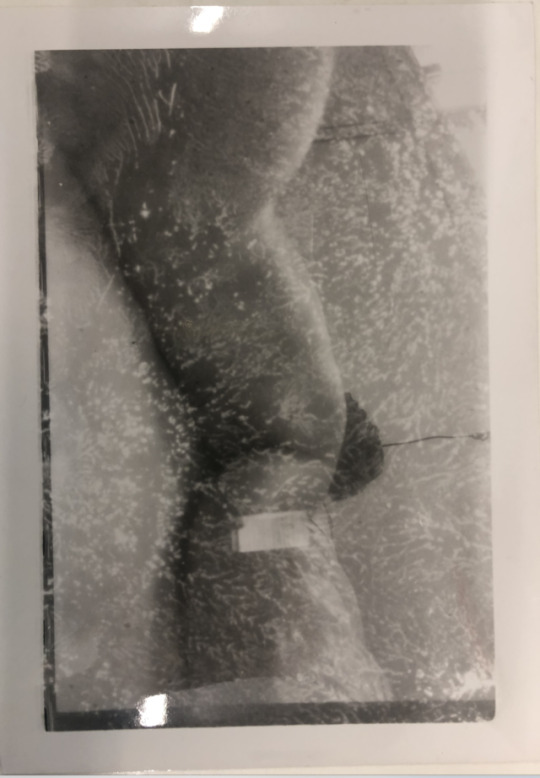
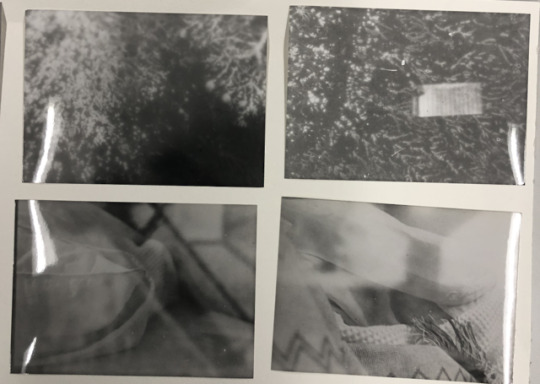

I knew I wanted to focus on my roommates as my subject to immortalise our times together. The nostalgia I felt from looking at Alison Rossiter’s work made me realise I was drawn towards the theme of time/timelessness/timeless and the fleetingness of our lives. In a way seeing our mundane every day lives frozen in time seemed to evoke a feeling of belonging and love for my roomies - who are my best friends!
This was my main driver/emotional compass while shooting this roll. I scheduled consequtive days early in the morning to try and capture my friends in the most raw and natural state. I wanted to steer clear of poses/engineered motions that would take away from the element of randomness I was bringing into the work. This element of pure chance was driven by using expired Svema film.
By using this film, the sense of time and chronology is strong and once again nostalgic of another era. It feels as if the moments I’m trying to capture ar emoments thousands of other people have experienced and will experience again.
Key things I wanted to achieve was lack of a cultural context - ie this work could be anywhere/anytime. it’s lack of distinct contemporary triggers brings in the elements of timelessness. The work itself is chronological as it follows a punctual schedule however it is not limited by these parameters but hopefully grows beyond them.
0 notes
Photo



For our final assessment I was conceptually inspired by three artists:
Alison Rossiter: Is a photographer that uses camera-less techniques to produce photograms on expires, out-dated silver geltain print paper. In her own words “It’s time traveling, I can hold a Fuji paper that I know was made between the wars and I’m transported to pre-World War II Japan.”
James Welling: a conceptual photographer, he explores abstraction & perception to re-define photography. His series Glass House blurs the lines between architecture and nature, often making use of double exposures to create his landscapes.
Matthew Brandt: an experimental photographer uses double exposures amongst other techniques to create large scale photographs that make use of the the chemistry & alchemy of print making to experiment with various effects.
What drew me to these artists is their experimental and varied approach to photography that evokes a strong emotion in both process and final result
0 notes
Photo
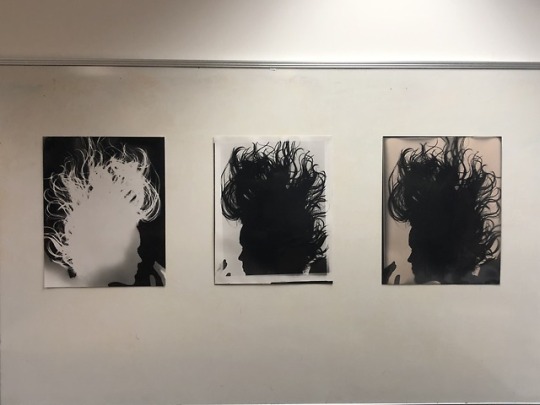
Part 2 of my submission - a record of emotion I have set up my work this way because it is meant to represent a retrospective study of my own emotions. I’m looking down ‘the rabbit hole’ into myself to extract a brief snapshot of my thoughts and freeze them in time by reproducing then through a physical expression of my body. However - like all emotions, feelings, or sentiments - they never exist in stasis, we are always changing and adapting hence the evolution of these prints. We see the first one which is a stark imprint of my profile followed by the second print which is softer and set within a frame. The frame itself represents the parameters of looking back at myself - almost through a window. And finally, the third print which was developed but not fixed over the period of a week is a continued abstraction of what I was feeling/experiencing from the first photogram I took. It demonstrates how the same defined moment can change depending on the parameters set in place.
0 notes
Photo

Part 1 of my submission - Dissections of a sentiment I have arranged the images in this order as they correspond to a chronology of process. The first image is a snapshot fixed in place, the second and third were developed with 10 second intervals and the third was developed but not fixed. The theme behind these prints is the record of a feeling or sentiment - and how it can be altered with the passing of time
0 notes
Photo
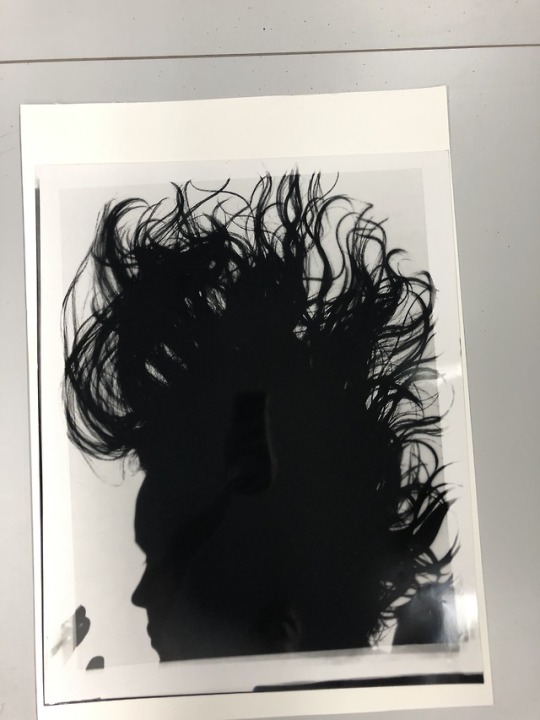
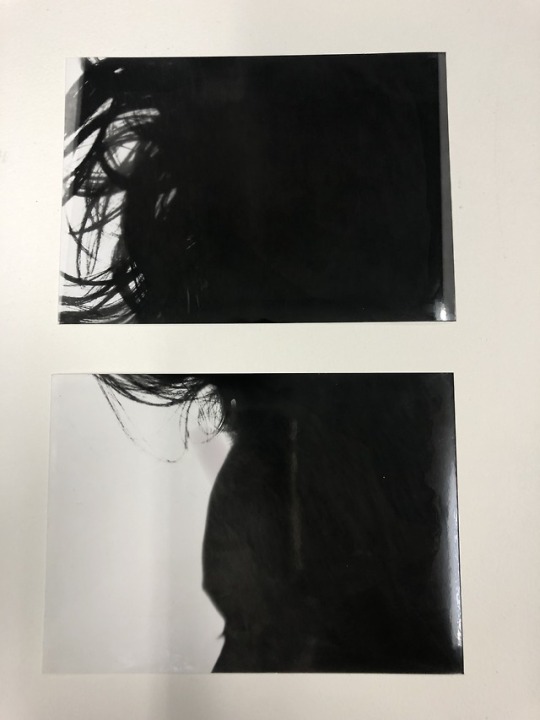
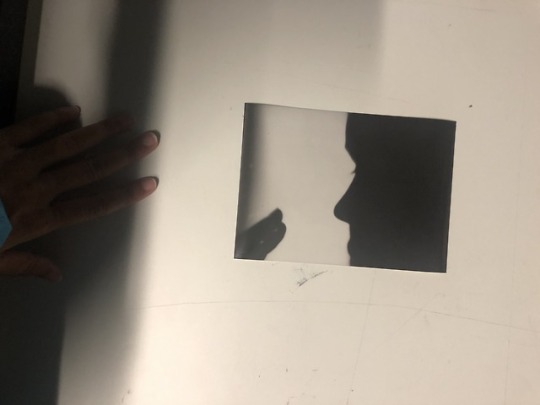
Focusing on this print, I feel it is quite ambiguous - the longer I observe, the larger the variety of emotions I can discern. I decide to experiment by sectioning the print into different parts - to dissect the body is to dissect the emotion. Unexpectedly I find that this cross section produces interesting results and emanates different responses from my peers.
I find it fascinating that from the same print I am able to extract so many definitions and I feel as if I am getting closer to achieving my goal of manifesting an emotion from the audience that transcends the very material (in this case my own body) I have used to produce this work.
0 notes
Photo



Continuing on my experiments I discovered it became a challenge to engage with different emotions when limited to a silhouette (without falling into the theatrical as I did previously with the over the top manifestation of frustration, or anger, perhaps even fright?)
In this second phase, I was quite drawn to this particular photogram - at times it is quite soft and ephemeral yet also hypnotising. I found that I kept returning to this particular print, though I still felt as if the tonality was not quite right.
Using techniques learnt in class I decided to do an inversion of the photogram - which I found to be much more successful. The subtleties of the expression and position of the hand are much more apparent with the black and white switched.
In the last image, I can see my final project is beginning to take shape - although I am still not entirely satisfied.
0 notes
Photo


Using my body as the material to translate my emotion was quite fun! I found the best results were achieved by setting the enlarger at it’s maximum height in order to maximise the space I could occupy.
The two photograms above are my first initial attempts.
(I chuckled a few times at the second as I did not anticipate I would look so villainous!)
0 notes
Photo



The focus of this weeks experimenting was using water and shapes to emanating an emotion or a reaction. Continuing from the abstract themes I was pursuing the week before I began making the focus of my photograms not the actual material but rather the sentiment open for interpretation from an audience.
The first two images are photograms of water that I developed using developer and fixer. In other words I poured developer very quickly in multiple layers and alternated with fixer in order to further abstract the visuals of the scenery. This created an interesting blend of photogram and chemigram that I found quite interesting. Upon further study of this work I realised I was starting to manifest an emotional response to the visual and I became interested in this reaction. The longer I studied these abstracts forms the deeper I dug within myself to find an emotion that fit the work.
With this in mind, I began to notice a shift in my focus once more. This time wanting to draw a parallel between this internal feeling and the physical feeling thus produced.
It was at this moment that I became interested in my own emotion and the physicalities in which I could express them. Drawing from my personal experience I decided to use my body as the tool of expression.
I began first looking within myself for an emotion and the duality of internal vs external emotions. With this in mind I used my own body to trace a physical manifestation of what I was feeling internally. As you can see from the first print I stayed quite literal by doing a mirror exposure. I achieved this by covering half the paper with a thick board and exposing my profile before doing the same to the other half which produced this effect. The composition is meant to be a representation fo this duality, of ‘looking into one’s soul’ - so to speak!
0 notes
Photo



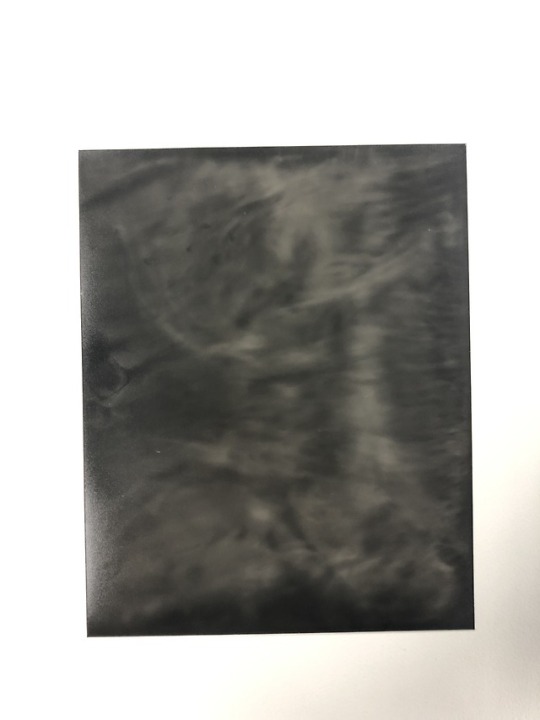


Here we see a continuing of a shift in focus on water as a main medium. This was particularly tricky as capturing just the right moment in the ‘ripple’ of water requires a fair bit of precision. The easiest way I found of getting an impression was by placing a basin on the ground with the photographic paper entirely submerged and pouring water from a bottle whilst standing above the basin.
After many attempts I discovered the best results came from exposing the paper at exactly the same moment as the water hits the basin. This is because the force of the water first making contact with the submerged paper has the most amount fo force creating the many ripples across the surface of the water. If the exposure is even 1/2 of a second off it produces a much less well-defined pattern with a more hazey, soft texture.
An example of this is in the first photo where you can see that first impact of water against the paper vs the next highlighted image down where the effect is much more subtle. Though I did not get the change to experiment with this, I suspect the most effective way to get an even well defined rippled is by having a constant jet of water such as a garden hose or shower head. However this requires a customised setup and maybe an assistant or two!
As I continued my experiments using water I began to be drawn more towards the ‘emotion’ or ‘feeling’ that this photograms emitted. I stated leaning more towards the softer water patterns as they seemed less prescribed than the more distinct patterns. By question my peers I found out that the most interesting interpretations of my work were the ones that were much more open ended. In other words, the more ‘dreamy’ effects invited more discussion and were subjective to the individuals perspective. This idea resonated more strongly with me.
0 notes
Photo

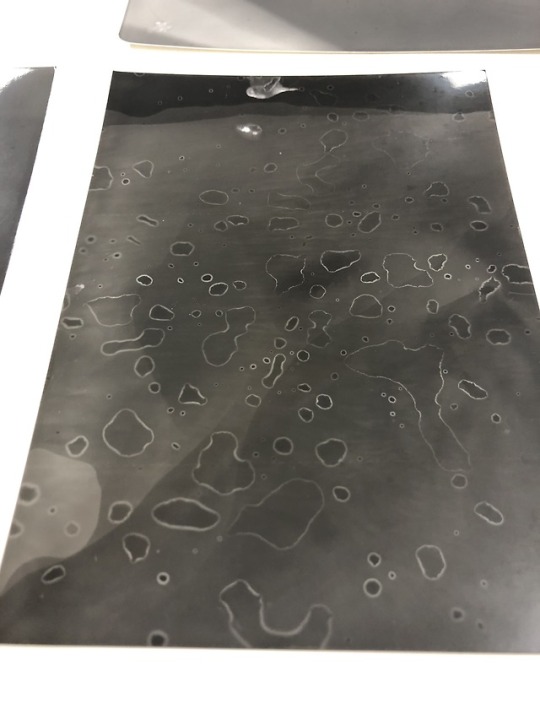
In this set of experiments, I am bringing the focus tighter in on forms of water and its different states. Drawing from the previous weeks examples - I am finding I prefer working with less materials thereby removing many different variables in which my final piece can change.
I chose my favourite out of this suite of ‘tiles’ as I feel they are the most successful out of the whole.
0 notes
Photo



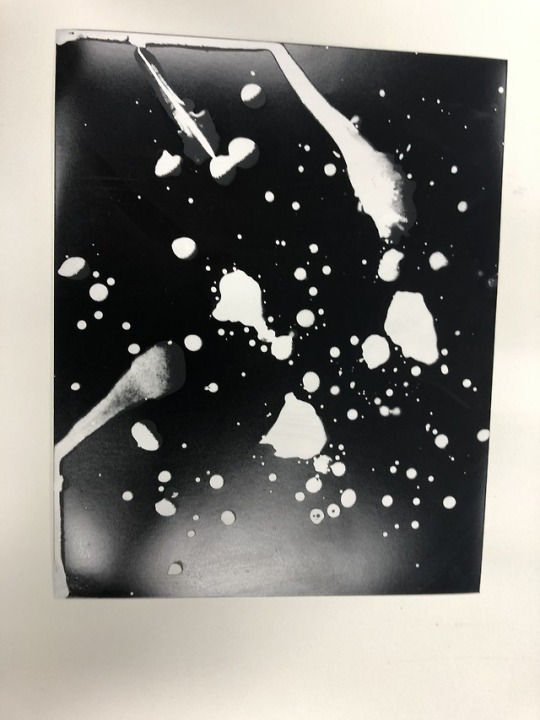



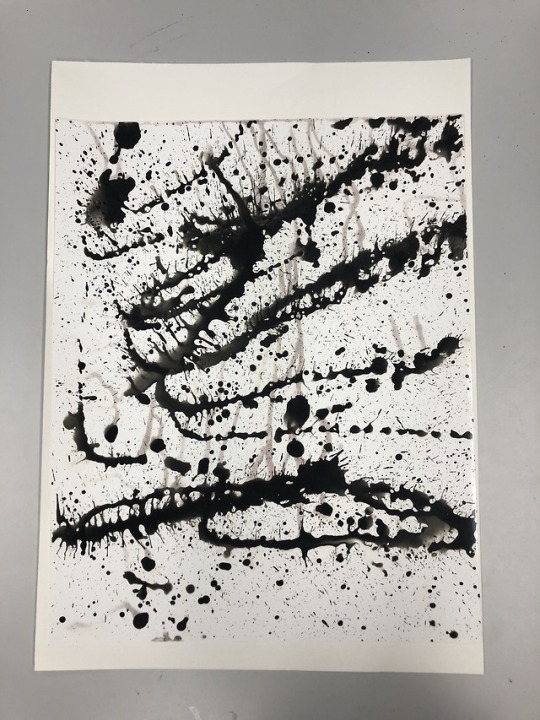
The first 2 weeks I was very interested in how different soluble materials could interact with each other. Through my experimentations I discovered that certain organic materials such as rock salt, baking soda and flour dispersed light differently. Flour and baking soda did not let light traverse through - or I left it in the water for an insufficient amount of time. I found that the salt created little prisms that bent the light creating little halos around the individual rocks.
Some of my experiments were totally overexposed as I was learning the technicalities of camera less photography - in other words they turned out completely black! These ones I took home with me to experiment with household liquids such as detergent and bleach to see if I could pull any other effects out of these prints. The effects from this are quite stark and gripping - splatters of white paint against a black base. Though I enjoyed creating these they were probably the least favourite of my ‘tiles’.
Towards the end of this first phase of experimenting I was drawn towards the variations and patterns in the water I was using to submerge my other substances. By this I mean when I was placing my materials in water, the top layer of liquid effectively became the conduit between light and paper which created a more subtle layer between the objects and the light. This slight distinction is more fleeting, and drew me towards more abstract forms.
0 notes
Photo

My profile picture is one of my own images, taken in Mexico - it’s a close up detail of a marble bench. The groves and divots of the marble have weathered a few decades and is reminiscent of tree rings, recording history through a physical manifestation. The detail could also look like a landscape taken from an aerial perspective - the flows and patterns of the landscape, or perhaps of other planets even (similar to Jupiter’s surface).
0 notes
Photo
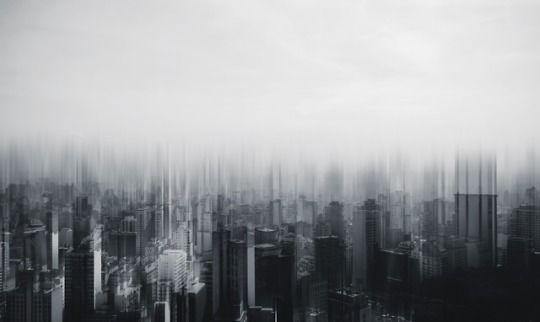
I chose this photo by Rafael De Nadai as my cover image because the contrast of soft vs hard edges appealed to me. The timeless-ness of the image adds a dimension; it could be any city in any country - a record of time almost.
1 note
·
View note